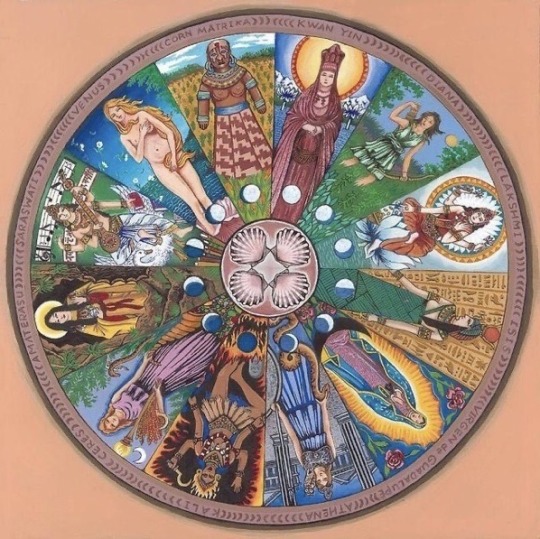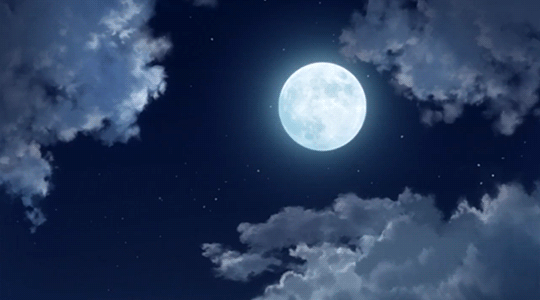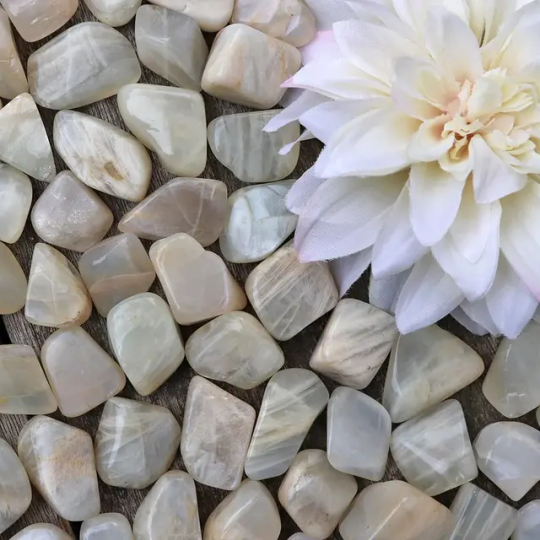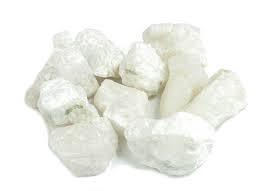#Isis Diana
Explore tagged Tumblr posts
Text















Transcendents main cast
More Details Here
Meet the Cast coming soon...
#Sim#Simmer#Simming#Sims#Simblr#Sims 4#The Sims 4#TS4#S4#The Sims#Transcendents#Titles#Astrid Axton#Giselle Gunther#Soledad Sandoval#Cassandra Goth#Ali Al-Ahmad#Kojiro Kuroboshi#Darren Dreamer#Isis Diana#Simon Peter#Lucien Gunther#Vera Griffin#Jacob Volkov#Kristopher Volkov#Dina Caliente#Nina Caliente#Caliente twins#Don Lothario#Vladislaus
1 note
·
View note
Text

#venus#kali#isis#diana#ceres#athena#kwan yin#lakshmi#amaterasu#saraswati#corn matrika#virgin de guadalupe
44 notes
·
View notes
Text
at this point i think my religion is just worshiping divine women. Mother Mary, Diana, Isis, Asherah, they're all my deities
10 notes
·
View notes
Text







still one of my favorite photoshoots 🩷
#photoshoot#dazed#dazed magazine#female rap#celebrity#rapper#female rapper#ice spice#ice#spice#icespice#isis gaston#princess of rap#the peoples princess#karma remix#princess diana remix#like..?#gangsta boo#actin a smoochie#munch#munchkin#spice cabinet#bikini bottom#pink#2000s#y2k#in ha mood
48 notes
·
View notes
Text

A letter from 1980's Womanspirit magazine that mentions Lux Madriana, the earliest formal proto-Aristasia.
4 notes
·
View notes
Text
I really wish La Befana was celebrated internationally, just so we could have holidays media where she appears out of nowhere, like Santa does in Hallmark movies.
(Check the tags to see an infodump by yours truly)
#tbf she's not even celebrated in all Italy but I adore her#she deserves a crossover movie with Saint Lucy#and the target audience would be? me#yes i know we got those two movies starring Cortellesi but my point still stands#anyway she's a old whimsical lady witch that puts sweets inside children's stockins very much like Santa#but in the ol times (and I mean Ancient Rome and even before that) she was the goddess Diana Nemorense#she was said to fly in the sky with her handmaidens to bless crops after traveling to the realm of the dead in three days#then she got mixed with ancient egyptian goddess Isis in Ancient Rome so now she also had magical powers and/or a witch#and story went on until she became an old witch lady in the cultural sphere
1 note
·
View note
Text
Moon Magick

What Is A Moon Magick?
In many cultures around the world, practitioners have used the position of the moon, as well as the phases of the moon in their practice. Each phase of the moon is perfect for certain types of magickal workings. Not all witches depend on the particular moon phase. Many develop their own methods and techniques through trial and error to find out what works best. Those that do use the timing of the moon do so by choosing the moon phase most conducive to their magickal workings. This gives their magickal workings some extra lunar energy boost.
Correspondences:
Associated deities: Isis, Diana, Artemis, Morrigan, Holda, Nyx, Nephtys, Sedna, Lilith, baba, Yaga, Kali, Aphrodite, Freya, Ishtr, Hathor, Selena, Oshun, Perspephone, Flora, Cerridwen, Gaia, Epona, Yemanja, Rhiannon, Khonsu, Inanna, Hecate, ...ect
Animals: owls, rabbits, wolves, deer, cats, moths, bats, spiders, raccoons, opossum, cows, frogs, dogs, crabs, whippoorwill, panther
Crystals/Stones: moonstone, selenite, obsidian, silver, mother-of-pearl, aquamarine, gold beryl, topaz, emerald, clear quartz, coral, pearls
Moon Associations: Shadow work, Protection, Meditation, Journaling, Introspection, Strength , Love, Beauty, Manifesting, To attract new things, Purification, Letting go, celebrate your accomplishments, letting go, goal setting, banishing
Plants and Herbs: vervain, moonflower, jasmine, lemon balm, cabbage, camellia, camphor, chickweed, moonwort, gardenia, grape, lemon, passion flower, turnip, potato, pea, cucumber, pear, peach, willow, poppy, mountain ash, mango, wallflower, rowan, cactus
Moon Phases
New Moon
This is the crescent Moon when see the first peak of light, this is a time of newness, the beginning of relationships, the beginning of a new venture, the energy of this phase promotes new beginnings on any level. This is the time for change and for being open to, and looking for new opportunities, tilling the soil and planting seeds actually, and the seeds of ideas.
Waxing Moon
The Moon is beginning to gain strength as it grows in size, and goes from a new to a full Moon, this is a perfect time for growth and increasing things, growth within a relationship, financial growth, a time for learning and gaining knowledge.
If someone is thinking about pregnancy, this is a time of fertility, and it is an exceptional time for communication, in a business matter, or within a relationship. This is also an auspicious time for any legal matters, especially those where finances are concerned, if a healing spell, or healing of any type is needed, this is the time.
Waxing Gibbous
During the phase of the Gibbous Waxing Moon anything to do with increase is compatible; this is a good time for minor magic as the lunar energy is waning.
Full Moon
The full Moon is the most powerful phase, this is when the Moon is seen in its glorious fullness, this is a time of enlightenment and heightened psychic awareness. It is a time when everything comes together, it is a time of ideas, also a time of commitment, to a person, idea or project. It is also a time of family, and or friends coming together, any spell is well aspected during this phase of the Moon.
Waning Gibbous
The Waning Gibbous Moon is suitable for rituals associated with letting go, and banishing, if it is time to clear out the old and prepare for the new, this is the Moon phase to spell craft with.
Waning Moon
As the Moon decreases in size, it goes from full to dark, and this is a time of letting go, it is also a time of completion. If you have been wanting to change something in your life, this is the perfect time.
It is also a time of ending anything that doesn’t work in your life, this may be a habit, a relationship, or paying attention to issues associated with legal matters, this is a time to pay attention to anything that you have been procrastinating about
Moon Water
Moon water is very similar to Sun water. But rather than being charged by the sun, it’s charged by the moon. Moon water can be useful for helping boost the energy of a spell, to help an intention grow, protect and to cleanse a space.
Instructions:
Get a glass bottle
Fill it with any type of water.
Leave the bottle with water out in the moonlight for a whole night.
#thecupidwitch#witchcraft#witches#witch#witchcore#grimoire#witch community#witchblr#green witch#pegan#wiccablr#wicca#occult#book of shadows#magick#peganism#moon#moon phases#baby witch
522 notes
·
View notes
Text
Smokeable herbs and flowers
WARNING
Smoking herbs itself is not a safe practice because smoking substances can cause damages to the lungs & respiratory system that can lead to bronchitis, lung cancer & other respiratory illnesses.
Organic, food safe herbs & flowers should be used if you choose to smoke these. Plants from garden centers, outside foraging in the city, ect may have pesticides or other unknown & possibly unsafe substances on them which make them no longer safe to consume.
•Some of these herbs burn harshly & would be better vaporized and/or in herbal blends. PLEASE LOOK UP HOW TO MAKE YOUR OWN HERBAL SMOKING BLENDS
Never under any circumstances should you ingest or inhale a new substance before checking with a medical professional, especially if you are taking medication. You could have negative reactions.
Blue Cornflower
Known as: Bachelor's button, bluebottle, blue bow, blew cap, garden cornflower & hurtsickle
Gender: Feminine
Planet: Saturn
Element: Earth
Magical attributes: Abundance, calming, divination, Earth magick, enhancing psychic abilities, faerie magick, fertility, love, protection & sex
Deities: Chiron, Faeries & Flora
Blue Lotus
Known as: Baino, Egyptian lotus & lotus root
Gender: Feminine
Planet: Moon
Element: Water
Magical attributes: Fertility, healing, lock opening, love, luck, meditation, mental clarity, passing over rituals, protection, spirituality & wishes
Deities: Hermes, Horus, Isis, Nefertum, Oshun & Osiris
Blue Vervain
Known as: Brittanica, enchanter's herb, enchanter's plant, herba sacra, herb of grace, herb of the cross, holy wort, Juno's tears, lemon verbena, pigeons grass, pigeonwood, simpler's joy, verbena, van-van & verveine
Gender: Masculine
Planet: Sun
Element: Fire
Magical attributes: Abundance, astral binding, blessings to children, calming, chastity, creativity, divination, faerie magick, fertility, fortune, healing, love, luck, money, peace, prosperity, protection, purification, sleep, stimulates action, tranquil dreams, wand making & youth
Deities: Aphrodite, Aradia, Artemis, Bast, Cerridwen, Diana, faeries, Hecate, Hermes, Innana, Isis, Juno, Jupiter, Kali, Mars, Thor, Venus & Zeus
Cannabis
Known as: Chanvre, gallowgrass, ganeb, ganja, grass, hanf, kif, marijuana, neckweede, plant of the gods, taima, tekrouri, the tree of life & weed
Gender: Feminine
Planet: Saturn
Element: Water
Magical attributes: Commerce, exorcism, healing, love,meditation, protection, purification, spirt, travel & visions
Deities: Amaterasu & Sahe no Kami
( WARNING: will get you high.)
Calendula
Known as: Bride of the sun, marigold, ruddes, ruddles, summer's bride & sun's gold
Gender: Masculine
Planet: Moon
Element: Water
Magical attributes: Dreams, good luck in money, legal matters, prophetic dreaming, protection, psychic powers, respect, sun magick & wishes
Deities: N/A
(WARNING: can give a similar effect as smoking cannabis but more subtle)
Catnip
Known as: Cat, cat's play, cat's wort, catmint, catnep, catrup, field balm & nepeta nip
Gender: Feminine
Planet: Venus
Element: Water
Magical attributes: Animal blessing, beauty, binding, cat magick, dreams, happiness, healing, love, luck, peace, psychic connection, quick action & sleep
Deities: Bast, Cat Annis, Corn Cat, Freya, Maftet, Skhmet & ubastet
Chamomile
Known as: Camomyle, chamaimelon, Earth apple, ground apple, heermannchen chamaimelon, maythen, manzanilla, scented mayweed & whig plant
Gender: Masculine
Planet: Sun
Element: Fire
Magical attributes: Attraction, blockages removed, calmness, curse removal, gambling, hex breaking, love, luck, meditation, money, patience, purification, sexuality, sleep, spell combative & wealth
Deities: Cernunnos, Karnayna, Mercury, Oshun, Ra & St.Anne
Chrysanthemum
Known as: Mum
Gender: Masculine
Planet: Sun
Element: Fire
Magical attributes: Protection & strength
Deities: N/A
Coltsfoot
Known as: Ass' foot, British tobacco, bulls foot, butterbur, coughwort, donnhove, dovedock, foal's foot, halffoot, horsehoof, pas d'ane & sponnc
Gender: Feminine
Planet: Venus
Element: Water
Magical attributes: Animal magick, love, peace, prophetic dreams, prosperity, tranquility, visions & wealth
Deities: Brigid, Chiron & Venus
Damiana
Known as: Love leaf & Mexican Damina
Gender: Masculine
Planet: Mars
Element: Fire
Magical attributes: Aphrodisiac, astral travel, chakra opening, divination, love, lust, meditation, psychic powers, sex magick, spirt contact, tantric magick & visions
Deities: Artemis, Diana, Ganesha, Oshun, Pan, Vishnu & Zeus
(WARNING: smoking this will cause mild euphoria)
Eucalyptus
Known as: Blue gum, curly mallee, fever tree, maiden's gum, mottlecah, river red gum & stringy bark tree
Gender: Feminine
Planet: Moon
Element: Air & water
Magical attributes: Abundance, blockages removed, fertility, fortune, healing, luck, prosperity, protection, repel negative energies, road opening & water elemental evocation
Deities: Ogun
( WARNING: should be smoked sparingly as the oils can irritate your lungs. Try vaporizing it.)
Gingko
Known as: Ginkgo biloba, living fossil & maidenhair tree
Gender: Feminine
Planet: Moon
Element: Water
Magical attributes: Aphrodisiac, beauty, business, dreams, fertility, healing, love & spirt calling
Deities: N/A
Goldenrod
Known as: Aaron's rod, blue mountain tea, goldruthe, gonea tea, solidago, sweet goldenrod, sweet scented goldenrod, verg d'or, wound weed & woundwort
Gender: Feminine
Planet: Venus
Element: Water
Magical attributes: Divination, encouragement, find lost/hidden objects, luck, money, prosperity & wealth
Deities: Venus
Gotu kola
Known as: Chi-hsing, hydrocotyle asiatica radix, Indian pennywort, Indian hydrocotyle, marsh penny, pai kuo, thick-leaved pennywort & white rot
Gender: Masculine
Planet: Mercury
Element: Air
Magical attributes: Aphrodisiac, calming, depression, divination, energy, gain, healing, longevity, lucid dreaming, meditation, memory, mental stimulation, psychic powers, psychic protections & vitality
Deities: N/A
Hops
Known as: Bee flower, beer flower, flores de cerveza, hop flower & stinging nettle
Gender: Masculine
Planet: Mars
Element: Air
Magical attributes: Blessing, healing, health, repelling negativity, protection & sleep
Deities: Hygeia, Hypno, Isis & Thoth
Hyssop
Known as: Hyssop herb, isopo, ysopo & yssop
Gender: Masculine
Planet: Jupiter
Element: Fire
Magical attributes: Banishing, blockages removed, faerie magick, hex breaking, protection, purification, road opening & sacrifice
Deities: Faeries & Obatala
Jasmine
Known as: Jessamin, moonlight on the grove, pikake, poet's jasmine, queen of perfume, royal jasmine, sampaguita, yeh-lsi-ming & ysmyn
Gender: Feminine
Planet: Moon & Venus
Element: Water
Magical attributes: Abundance, anger reduction, aphrodisiac, aura health, calming, compassion, confidence, depression, divination, dreamwork, elegance, family, fertility, fortune, gardening, grace, healing, health, love, lucid dreaming, luck, lunar magick, meditation, money, peace, prophetic dreams, prosperity, protection, rejuvenation, sexuality, sleep, spirituality, spirtual love, visions & wealth
Deities: Diana, Venus & Vishnu
Kava kava
Known as: Asava pepper, ava, ava pepper, intoxicating pepper & yagona
Gender: Feminine
Planet: Saturn
Element: Water
Magical attributes: Aphrodisiac, astral travel, cleansing, dreams, employment, promotion, healing, humility, legal matters, loce, luck, protection, psychic powers, replenishing respect, rites of passage, soul strengthening, spirt contact, travel, visions & water magick
Deities: Kanaloa, Kane & Lono
( WARNING: some users indicated it may cause psychoactive, numbness and euphoria)
Lavender
Known as: Elf leaf, nard, nardus & spike
Gender: Masculine
Planet: Mercury
Element: Air
Magical attributes: Chastity, clairvoyance, devotion, dreams, faerie magick, handfasting, happiness, healing, longevity, love, meditation, mental clarity, money, peace, protection, purification, sexuality, sleep, virtue & wishes
Deities: Aradia, Elves, Faeries, Hecate & Saturn
Lemon balm
Known as: Balm mint, bee balm, blue balm, cure-all, cropsy plant, garden balm, lemon balsam, oghoul, sweet balm & tourengane
Gender: Feminine
Planet: Moon
Element: Water
Magical attributes: Blockages removed, esbat rituals, healing, love, road opening, spirtual development, success sympathy
Deities: N/A
Lemon grass
Known as: Citron
Gender: Masculine
Planet: Mercury
Element: Air
Magical attributes: Abundance, blockages removed, calming, fertility, fortune, luck, lust, prosperity, purification, psychic powers, road opening & soothing
Deities: Hermes & Mercury
Linden flowers
Known as: Lime blossoms, lime tree, linnaflowers & tilia
Gender: Masculine
Planet: Jupiter
Element: Air
Magical attributes: Immortality, love, luck, protection, sleep & spirtual health
Deities: N/A
Lobelia
Known as: Asthma weed, bladderpod, emetic herb, emetic weed, gagroot, Indian tobacco, pukeweed, rag root, vomit wort & wold tabasco
Gender: Feminine
Planet: Saturn
Element: Water
Magical attributes: Health, love, protection & storm halting
Deities: N/A
(WARNING: smoking too much may make you puke)
Marjoram
Known as: Joy of the mountain, knotted marjoram, knotted marjorane, marjorlaine, mountain mint, sweet marjoram & wintersweet
Gender: Masculine
Planet: Mercury
Element: Air
Magical attributes: Attraction, desire, dreams, handfasting, happiness, health, joy, love, money, protection, purification, repelling negative energies & wishes
Deities: Aphrodite & Venus
Marshmallow leaf
Known as: Althea, guimavuve, heemst, mallards, mortification plant, schloss tea, slaz, sweet weed & wymote
Gender: Feminine
Planet: Saturn
Element: Earth
Magical attributes: Exorcism, love, protection & psychic powers
Deities: Althea
Motherwort
Known as: Lion's ear, lion's tail, Roman motherwort & throwwort
Gender: Feminine
Planet: Venus
Element: Water
Magical attributes: Confidence, counter magick, easing childbirth, ego bolstering, feminine magick, feminine strength, fertility, happiness, joy, midwifery, perfection & success
Deities: Ogun
Mugwort
Known as: Artemisia, artemisia herb, cingulum, felon herb, muggons, naughty man, old man, old uncle Henry, sailor's tobacco, St.John's plant, sancti johannis
Gender: Feminine
Planet: Venus & Moon
Element: Earth
Magical attributes: Astral travel, clairvoyance, divination, fertility, healing, lust, prophetic dreams, protection, psychic powers, scrying & strength
Deities: Aida Wedo, Artemis, Diana, Isis, Lakshimi & St.John
Mullien
Known as: Aaron's rod, Adam's flannel, beggar's blanket, beggar's stalk, bug taper, blanket herb, blanket leaf, boy scouts toilet paper, candlewick plant,cow's lungwort, cuddy's lungs, devil's tobacco, duffle, feltwort, flannel flower, flannel plant, fluff weed, graveyard candles, graveyard dust, great herb, great mullien, hag's tapers, hare's beard, hedge taper, ice leaf, Jacob's staff, Jupiter's staff, lady's Foxglove, lungwort, miner's candle, pig taper, quaker rouge, rag paper, shepard's herb, shepard's staff, torches, torchwort, velvetback, velvet dock, velvet plant, white man's footsteps, witch's candles, witch's taper & wooly mullin
Gender: Feminine
Planet: Saturn
Element: Water
Magical attributes: Astral work, centering, courage, curse repellent, divination, dreams, exorcism, graveyard dirt, health, helps to keep a good head spsce, herd protection, Hunter's charm, love, protection to children from faeries, protection, repelling malicious ghosts & spirts, repelling negative energies, repelling nightmares & travel safety
Deities: Jupiter & Saturn
Nettle
Known as: beggar's lice, common nettle, nettle leaves, ortiga ancha & stinging nettle
Gender: Masculine
Planet: Mars
Element: Fire
Magical attributes: Consecration, exorcism, fishing magick, funerary rituals, healing, lust, protection & repelling negativity energy
Deities: Apollo, Chang-o, Helios, Oya, Ra, Shango & Thor
Passion flower
Known as: Granadilla, grandilla, maracoc, maypops, passion vine & purple passion flower
Gender: Feminine
Planet: Venus
Element: Water
Magical attributes: Calming, friendship, peace, prosperity, sexual vitality, sleep & tranquility
Deities: Hestia, Hypnos & Yemaya
Peppermint
Known as: Brandy mint & lammint
Gender: Masculine
Planet: Mars
Element: Fire
Magical attributes: Abundance, divination, energy, fertility, fortune, healing, love, luck, lust, mental stimulation, prophecy dreams, prosperity, psychic powers, purification, sleep & visions
Deities: Pluto & Zeus
Raspberry leaf
Known as: European raspberry & red raspberry leaf
Gender: Feminine
Planet: Venus
Element: Water
Magical attributes: Love, protection & safe pregnancy
Deities: Innana, Isis & Oshun
Red clover
Known as: Cleaver gras, cowgrass, honey, honeystalks, marl grass, shamrock, three leaved grass, trefoil & trifoil
Gender:Masculine
Planet: Mercury
Element: Air
Magical attributes: Abundance, anti-hexing, counter spells, exorcism, faerie magick, faithfulness, fertility, fidelity, fortune, hex breaking, love, luck, memory, money, power, prosperity, protection &success
Deities: Artemis, faeries, Osiris & Rowan
Red willow bark
Known as: Osier, pussy willow, saille, salicyn willow, saugh tree, tree of enchantment, witch's asprin & withy
Gender: Feminine
Planet: Moon
Element: Water
Magical attributes: Astral work, besom making, death, divination, empathy, enchantments, fertility, healing, inspiration, love, moon magick, passion over rituals, psychic energies & wishes
Deities: Artemis, Belili, Belenus, Ceres, Diana, Hecate, Hera, Mercury & Persephone
Rose
Known as: N/A
Gender: Feminine
Planet: Venus
Element: Water
Magical attributes: Abundance, beauty, clairvoyance, divination, dreams, feminine magick, fertility, fortune, friendships, handfasting, healing, love, luck, peace, prosperity, protection, psychic powers & visions
Deities: Adonis, Aphrodite, Aurora, Cupid, Demeter, Eros, Freya, Hathor, Holda, Hypocrites & Isis
Rosemary
Known as: Compass weed, dew of the sea, elf leaf, guardrobe, incsensier, labonotis,Mary's cloak, polar plant, sea dew, stella maria & star of the sea
Gender: Masculine
Planet: Sun
Element: Fire
Magical attributes: Aphrodisiac, baby blessing, cleansing, elf magick, exorcism, faerie magick, friendships, handfasting, healing, hex-breaking, longevity, love, lust, memories, mental powers, protection, psychic powers, purification, sleep, strega magick, Wiccaning & youth
Deities: Elves, Faeries, Sea spirits & Virgin Mary
Sage
Known as: Common sage, garden sage & meadow sage
Gender: Masculine
Planet: Jupiter
Element: Air
Magical attributes: Animal guides, aphrodisiac, blockages removed, cleansing, courage, Earth magick, fertility, glamour, grounding, healing, hex breaking, house blessings, immortality, longevity, prosperity, protection, purification, road opening, strength, wisdom & wishes
Deities: Chiron, Consus, Jupiter, Obatala & Zeus
Salvia
Known as: N/A
Gender: Feminine
Planet: Venus
Element: Water
Magical attributes: Binding, love & memories
Deities: N/A
( WARNING: Can cause psychoactive effects)
Skullcap
Known as: American skullcap, blue pimpernel, blue skullcap, European skullcap, greater skullcap, helmet flowers, hooded willow herb, hoodwort, scullcap, quaker bonnet, mad-dog weed, mad dogweed, madweed & side-flowering skullcap
Gender: Feminine
Planet: Saturn
Element: Water
Magical attributes: Dedications, fidelity, handfasting, initiation rights, love, oaths, peace & relaxation vows
Deities: Faeries, Hera & Obatala
Spearmint
Known as: Brown mint, fish mint, garden mint, green mint, green spine, lamb mint, mackerel mint, mismin, our lady's mint. Sage of Bethlehem, spire mint & yerba buena
Gender: Feminine
Planet: Venus
Element: Water
Magical attributes: Healing, love, mental ability, money, psychic powers & wishes
Deities: Mercury
St.John's wort
Known as: Amber, fuga daemonum, goat weed, herba John, John's wort, kalimath weed, klamath weed, scare-devil, sol terrestis & tipton weed
Gender: Masculine
Planet: Sun
Element: Fire
Magical attributes: Binding, divination, happiness, health, hex-breaking, love, power, protection & strength
Deities: Baldur
Tarragon
Known as: N/A
Gender: Masculine
Planet: Mercury
Element: Air
Magical attributes: Consecration, compassion magick, goals, healing &l lasting interest
Deities: Lilith
( WARNING: Some users reported hallucinatory effects)
Tobbacco
Known as: Asemaa, taaba, tabacca & tabak
Gender: Masculine
Planet: Mars
Element: Fire
Magical attributes: Astral, banishing, confidence, divination, dreams, healing, legal matters, peace, prophecy, purification & strength
Deities: N/A (However, it is a traditionally good offering to many)
Tulsi
Known as: Brush leaf , holy basil, Thai basil & vana tulsi
Gender: Masculine
Planet: Mars
Element: Fire
Magical attributes: Abundance, banishing, binding, clairvoyance, commanding courage, divination, exorcism, fertility, flying, fortune, happiness, harmony, health, honesty, house blessings, love, luck, mending quarrels, money, obstacles removed, passing-over rituals, peace, prosperity, protection, psychic development, purification, relaxation healing, safe travels, sympathy, temper soothing & wealth
Deities: Aradia, Ares, Dionysus, Erzulie, Jupiter, Krishna, Loki, Mars, Obatala, Ogoun, St.Joseph, Seth & Vishnu
Uva ursi
Known as: Arberry, bearberry, bear's grape, bear's whortberry, crowberry, foxberry, hog cranberry, kinnikninnick, mealberry, mountain box, mountain cranberry, sandberry, uva ursa & universe vine
Gender: Feminine
Planet: Moon
Element: Water
Magical attributes: Astral work, divination, dreams, prophecy & psychic workings
Deities: N/A
( WARNING: Some historical reports indicate a “narcotic” or stimulant effect, but it was almost always smoked with other herbs)
Valerian
Known as: All heal, amatilla, bloody butcher, capon's trailer, cat's valerian, garden heliotrope, graveyard dust, phu, red valerian, St.George's herb, sete well, setwell, valerian toot & vandal root
Gender: Feminine
Planet: Venus
Element: Water
Magical attributes: Dream magick, harmony, love, protection, purification, quarrel mending & sleep
Deities: Obatala
Wormwood
Known as: Absinthe, crown for a king, green ginger, madderwort, old woman & wormot
Gender: Masculine
Planet: Mars
Element: Fire
Magical attributes: Animals, calling spirits, clairvoyance, divination, love, protection, psychic powers & transformation
Deities: Aida Wedo, Artemis, Diana, Innana, Iris, Isis, Lakshimi & Sif
Yarrow
Known as: AchiUea, allheal, angel flower, arrow root, bad man's plaything, bloodwort, cammock, carpenter's weed, death flower, devil's mustard, devil's nettle, devil's plaything, dog daisy, eerie, feild hops, gearwe, gordaldo, gordoloba, green arrow, herbe militaris, hierba de las cortadura, hundred leaved grass, knight's milfoil, knyghten, lady's mantel, milfoil, military herb, millefoilium, noble yarrow, nosebleed plant, old man's mustard, old man's pepper, plumajilo, sanguinary, seven year's love, snake's grass, soldier's thousand seal, soldier's woundwort, squirrel's tail, stanch grass, stanch weed, tansy, thousand-leaf, thousand seal, thousand weed, woundwort, yarrowway & yerw
Gender: Feminine
Planet: Saturn & Venus
Element: Earth & water
Magical attributes: Attracting friends, banishing, blockages removed, contact with others, courage, divination, dream work, exorcism, faerie magick, fear repelling, handfasting, happy marriage, healing, longevity, love, prophecy, protection, psychic powers, purification, repelling negative energies & road opening
Deities: Achilles, Aphrodite, Faeries, Oshun & Yemaya
Sources:
Llewellyn's Complete Book of Correspondences by Sandra Kines
Wikipedia
A Witch's Book of Correspondences by Viktorija Briggs
The Encyclopedia of Natural Magic** by John Michael Greer
Wild Witchcraft by Rebecca Beyer
Plant Witchery by Juliet Diaz
A Compendium of Herbal Magick by Paul Beyerl
The Herbal Alchemist Handbook by Karen Harrison
The Book of Flower Spells by Cheralyn Darcey
#witchblr#wiccablr#paganblr#spiritual#herbalism#magical herbs#flowers#witches of tumblr#witch community#witch#witchcraft#traditional witchcraft#green witchery#green witch#smoke#smoking#plants#grimoire#book of shadows#smokable herbs#witch tips#witch guide#beginner witch#baby witch#cannabis#herb blends#herbs#witchcore#420#weed
101 notes
·
View notes
Text
Everything You Need to Know About Crystals: Moonstone (White)
Moonstone (The Sacred Stone of the Moon)



Color: White, cream, yellow, blue, green
Rarity: Easy to obtain
Hardiness: 6.5
Type: Oligoclase/ Feldspar
Chakra Association: Brow, Heart, Root, Third Eye, Sacral, Solar Plexus
Deities: All Lunar Deities, Diana, Selene, Artemis, Isis, Chandra
Birthstone: June
Astrological Signs: Cancer
Element: Water
Planet: Moon
Origin: Australia, India, Myanmar, Sri Lanka, USA
Powers: Femininity, Calmness, Balance, Luck, Intuition, Healing, Sensual, Patience, Reproductive Health
Crystals It Works Well With: Aquamarine, garnet, pearl
How It is Created: Moonstone is a type of feldspar composed of potassium aluminum silicate. It can be found in a number of colors, but all examples demonstrate a particular sheen known as labradorescence; an effect also found in labradorite and blue moonstone. Labradorescence is a light effect caused by parallel hairlike structures laid down within the crystal matrix, which reflect light back and forth, creating different-colored effects, including blue, yellow, silvery gray, and white.
History: Moonstone is the sacred stone of India. During the earliest traditions, the gem was said to have been embedded in the forehead of Ganesh, the four-handed god of the moon, since the beginning of time. It was written in Hindu mythology that moonstone is made from moonbeams, thus its luster.
The magnificent gem is never displayed outside for sale unless placed on a yellow cloth, as yellow is a sacred color. According to other legends, Moonstone can give gifts of prophecy and clairvoyance to the wearer. It could also clear the mind for the wearer to welcome wisdom. But to unlock this ability, Moonstone must be placed in their mouths during the full moon. Since ancient Egypt it is considered as a spiritual stone as it is seen as the gem of protection for night travelers.
Since Moonstone looks a lot like the moonshine, ancient Romans believed that it was formed from moonlight. If you look at the gem closely, you’ll see a dance of light that lurks on the insides of the gem. Ancient Greeks merged the names of the goddess of love (Aphrodite) and the goddess of the moon (Selene) and christened Moonstone as “Aphroselene”. While the Romans believed that the gem exhibits the image of their moon goddess, Diana.
It is also known as an aphrodisiac and when worn by two people, they will fall passionately in love when the moon is high. Moonstone was once called the “Travelers Stone” as it is said to protect those who travel at night, especially at sea.
What It Can Do:
When worn, can attract true love and arouse passion
If you give your lover a moonstone during the full moon, there will be passion between you always
Can settle disagreements and return things to peaceful status
Sewn into garments can enhance fertility
Wearing moonstone protects sensitive emotions
Enhances divination, prophetic dreams and prevents nightmares
Great for meditation and scrying
Represents yin and attracts peaceful energy
Protects travelers at night and by sea
Considered good luck
Balances male-female energies and aids men who want to get in touch with their feminine side
Affects the female reproductive cycle and alleviates menstrual-related diseases and tensions
Helps with digestive and reproductive systems, assimilates nutrients, eliminates toxins and fluid retention, and alleviates degenerative conditions of the skin, hair, eyes and fleshy organs such as the liver and pancreas.
How to Get the Best Out Of: Wear as a ring or place on the appropriate body part, would recommend the forehead, for spiritual experiences, and solar plexus or heart for emotions. Women may need to remove Moonstone at full moon.
How to Cleanse and Charge: Moonstone is relatively soft stone, 6 on the Mohs scale, so it should be handled with care as it can be easily scratched or crushed. Moonstone should be stored separate from other jewelry in its own soft bag or lined box and should not be worn while performing strenuous tasks that could result in it getting bumped or scratched. It can be cleaned with plain water and a soft cloth. If it gets scratched, take it to a jeweler to have it polished out.
Charge your moonstone in the light of the waxing moon and keep it out of direct sunlight.
Crystal Grid: N/A Couldn't find one that wasn't too complex @_@
Sources
#moonstone#witchblr#witch community#witchcraft#occulltism#paganblr#gemstone#crystal witch#crystals#witchcraft 101#witchcraft resources#geology#lunar#lunar witch#nature#geology rocks#rocks#samhain
335 notes
·
View notes
Text
The Antonian Reading List
Mark Antony: A Life by Patricia Southern (Highly recommended!)
Mark Antony: A Biography by Eleanor Goltz Huzar (Highly recommended!)
The Life and Times of Marc Antony by Arthur Weigall (Recommended)
Marc Antony: His Life and Times by Allan Roberts (Recommended)
Marc Antony by Mary Kittredge
Antony & Cleopatra by Patricia Southern
Antony & Cleopatra by Adrian Goldsworthy (By far the most negative book on Antony by a modern historian, the Cleopatra portion is better)
Mark Antony: A Plain Blunt Man by Paolo de Ruggiero (Recommended)
Mark Antony and Popular Culture: Masculinity and the Construction of an Icon by Rachael Kelly
Mark Antony's Heroes: How the Third Gallica Legion Saved an Apostle and Created an Emperor by Stephen Dando-Collins
A Noble Ruin: Mark Antony, Civil War and the Collapse of the Roman Republic by W. Jeffrey Tatum (Highly recommend!)
Mark Antony & Cleopatra: Cleopatra's Proxy War to Conquer Rome & Restore the Empire of the Greeks by Martin Armstrong
Actium and Augustus: The Politics and Emotions of Civil War by Robert Alan Gurval
The Roman Revolution by Ronald Syme (Recommended)
Octavian, Antony and Cleopatra by W. W. Tarn
Fulvia: Playing for Power at the End of the Roman Republic by Celia E. Schultz
Cleopatra: Last Queen of Egypt by Joyce Tyldesley (Highly Recommended!)
Cleopatra by Michael Grant (Highly Recommanded!)
Cleopatra: A Life by Stacy Schiff (Highly Recommended!)
Cleopatra - A Biography by D. Roller
Cleopatra and Antony by Diana Preston
Cleopatra by Alberto Angela (Recommended)
Cleopatra by Jacob Abbott
Cleopatra the Great by Joann Fletcher
Cleopatra and Egypt by Sally-Ann Ashton
Cleopatra and Rome by Diana E. E. Kleiner
Cleopatra Her History Her Myth by Francine Prose
Cleopatra Histories, Dreams, and Distortions by Lucy Hughes Hallett (Recommended)
Cleopatra’s Daughter Egyptian Princess by Jane Draycott
The Storm Before the Storm by Mike Duncan
SPQR: A History of Ancient Rome by Mary Beard (Good for beginners)
The Last Assassin: The Hunt for the Killers of Julius Caesar by Peter Stothard
Robicon by Tom Holland
Alesia 52 BC: The final struggle for Gaul (Campaign) by Nic Fields
Actium 31 BC: Downfall of Antony and Cleopatra (Campaign) by Si Sheppard
Pharsalus 48 BC: Caesar and Pompey – Clash of the Titans (Campaign) by Si Sheppard
Philippi 42 BC: The death of the Roman Republic (Campaign) by Si Sheppard
Mutina 43 BC: Mark Antony's struggle for survival (Campaign) by Nic Fields
The War That Made the Roman Empire: Antony, Cleopatra, and Octavian at Actium by Barry Strauss
The Battle of Actium 31 BC: War for the World by Lee Fratantuono
Rome and Parthia: Empires at War: Ventidius, Antony and the Second Romano-Parthian War, 40–20 BC by Gareth C Sampson
Rivalling Rome: Parthian Coins and Culture by Vesta Curtis
Classical sources:
Plutarch’s Lives
Cicero: Philippics, Ad Brutum, Ad Familiares
Appian, The Civil Wars
Dio Cassius, The Roman History
Suetonius, The Twelve Caesars
Flavius Josephus, The Jewish War
Livy, The Early History of Rome
Tacitus, Annals and Histories
Friction:
The Tragedy of Julius Caesar by William Shakespeare
The Tragedy of Antony and Cleopatra by Willian Shakespeare
All For Love or The World Well Lost by John Dryden
The Siren and the Roman – A Tragedy by Lucyl
Caesar and Cleopatra by George Berbard Shaw
Cleopatra (play) by Sardou
Antony by Allan Massie
I, Claudius by Robert Graves
I, Cleopatra by William Bostock
Cleopatra by H. Rider Haggard
Cleopatra by Georg Ebers
Kleopatra (Vol I & II) by Karen Essex
Last Days with Cleopatra by Jack Lindsay
The Memoirs of Cleopatra by Margaret George
When We Were Gods by Colin Falconer
The Masters of Rome series by Colleen McCullough
Caesar's Soldier: Mark Antony Book I by Alex Gough (Ongoing series)
The Antonius Trilogy by Brook Allen
The Last Pharaoh series by Jay Penner
Throne of Isis by Juith Tarr
Hand of Isis by Jo Graham
Woman of Egypt by Kevin Methews
The Ides of Blood 01-06 (Comics)
Terror - Antonius En Cleopatra (Erotic yet pure love, Dutch comics)
Cleopatra - Geschiedenisstrip (Dutch comics)
Les Grands Personnages de l Histoire en Bandes Dessinees – Marc Antonie (French comics)
Les Grands Personnages de l Histoire en Bandes Dessinees – Cleopatre (French comics)
Les Grands Personnages de l Histoire en Bandes Dessinees – Julius Caesar (French comics)
Cléopâtre (French Manga)
Ils Ont Fait L'histoire - Cléopâtre (French Graphic Novel)
#mark antony#marc antony#marcus antonius#cleopatra#cleopatra vii#antony and cleopatra#rome#ancient rome#roman history#roman republic#roman empire#books#book recommendations#reading list#to read list#history
108 notes
·
View notes
Text

✦ — therapist id pack (⎚ ‸ ⎚ )

requested by anon


names ﹔
linda , kaylee , mark , roy , lyn , zia , hugo , isis , assia , sardon , martin , dell , vay , frode , oliver , mia , leah , william , leonard , warren , nevi , maynard , chester , ernest , aariz , audric , vidur , benjamin , ava , grace , owen , lauren , sebastian , nathaniel , diana , lawrence , isabella , claire

pronouns ﹔
therapy / therapist , help / helps , clip / clipboard , ze / zer , shem / sheir , smart / smarts , hy / hym , ver / vers , ce / cim , re / rem , sir / sirs , cer / cers , hz / hzm , pe / pen , note / notes , kye / kym , hir / hirs , mr / mrs , hx / hxm , brain / brains , psychology / psychologist , know / knowledge

titles ﹔
the shrink , the therapist , prn who is a mind doctor , the * who helps heal , prn with a smart / sharp / helpful mind , the * who you can confined in , prn you can trust , the trauma helper / keeper , ones counselor , prn who knows about the mind , the helper , prn who helps with trauma
* — can be changed to anything

flags ﹔
i couldn't find any , bwruise is so sorry ( ˃̣̣̥⌓˂̣̣̥ ˚ ) .

#【💊】. . .#npt#names#pronouns#titles#therapist npts#therapist npt#npt therapist#npt list#names pronouns titles#name suggestions#pronoun suggestions#title suggestions#npt blog#name list#pronoun list#title list#therapist npt list#npt therapist list
19 notes
·
View notes
Text
Ancient moon priestesses were called virgins. "Virgin" meant not married, not belonging to a man—a woman who was "one-in-herself." The very word derives from a Latin root meaning strength, force, skill; and was later applied to men: virile. Ishtar, Diana, Astarte, Isis were all called virgin, which did not refer to sexual chastity, but sexual independence. And all great culture heroes of the past, mythic or historic, were said to be born of virgin mothers: Marduk, Gilgamesh, Buddha, Osiris, Dionysus, Genghis Khan, Jesus—they were all affirmed as sons of the Great Mother, of the Original One, their worldly power deriving from her. When the Hebrews used the word, and in the original Aramaic, it meant "maiden" or "young woman," with no connotations of sexual chastity. But later Christian translators could not conceive of the "Virgin Mary" as a woman of independent sexuality, needless to say; they distorted the meaning into sexually pure, chaste, never touched. When Joan of Arc, with her witch coven associations, was called La Pucelle—"the Maiden," "the Virgin"—the word retained some of its original pagan sense of a strong and independent woman.
-Monica Sjöö and Barbara Mor. The Great Cosmic Mother: Rediscovering The Religion of the Earth.
260 notes
·
View notes
Text
Spiritual Dieties
A/N: Just realised that I've included a list of god/esses BUT Christian will be excluded because theirs is too BIG, seraphims, archangels, and the names of who is what that is it's own seperate post -_- they're christian witches so even my own opinion of christianty (I don't hate them but dont love them either) I would still respect anyone who still follows it.
_________________________________________________________
Deities:
Divine status, quality or nature. A god or Goddess, a supreme being. Most well known in Persian/Norse/Celtic/Greek/Roman/Egyptian/Hindu/Pagan/ Christian Angels-Demons, etc.
Celtic Gods:
Alator: God of war and protection, name means “he who nourishes the people.”
Albiorix: God of protection and war, name means “King of the world.”
Belenus: God of healing, name means “Bright one.”
Borvo: God of healing waters and minerals.
Bres: God of fertility, tyrant ruler
Cernunnos: Horned god of Nature, fertility, the underworld, wealth and fruit
Esus: God of strength and human sacrifice.
Lenus: God of healing, associated with Roman god Mars
Lugh: God of the sun and craftsmanship, justice and ruleship
Maponus: God of music, poetry and youth
Nuada: God of healing, the sea and warfare.
Celtic Goddesses:
Brigantia: Goddess of rivers and waters, poetry and crafts
Brigit: Goddess of fire, fertility, healing, cattle and poetry
Ceridwen: Goddess and sorceress, poetic wisdom, prophecy, magic and rebirth.
Epona: Horse goddess, fertility and cornucopias, horses and mules
Medb: Goddess of sovereignty and motherhood
Morrigan: Goddess of seafarers, fertility, and abundance
Nemausicae: Mother goddess, fertility and prosperity
Saitada: Goddess of grief.
_______________________________________________________
Norse Deities:
Gods:
Baldur: God of Beauty, peace, innocence, rebirth.
Bragi: God of Poetry, music, the harp
Hodr: God of Winter, Blind God, god of Darkness.
Hoenir: God of Silence, passion, spirituality, poetry
Kwasir: God of inspiration, god of wisdom.
Loki: God of trickery, mischief
Magni: God of strength and bravery
Njord: God Of the sea, wind, fish and wealth.
Odin: The allfather, God of war, poetry, magic and wisdom.
Thor: God of Thunder and battle, protection of mankind.
Try: God of War and Justice, god of skies
Ulr: God of skis and bows, god of winter.
Ali: God of revenge and vengeance.
Goddess:
Eir: Goddess of healing and medical skill.
Eostre: Goddess of spring and dawn.
Freyja: Goddess of love, fertility, battle and witchcraft
Frigg: Goddess of marriage and motherhood, Queen of the gods.
Gefjun: Goddess of fertility and plough, abundance and prosperity.
Hlin: Goddess of consolation and protection
Jord: Goddess of the Earth, Mother Earth.
Nanna: Goddess of joy, peace, and the moon.
Nott: Goddess of the night and darkness.
Sif: Goddess of the harvest, grain and earth
Sigyn: Goddess of fidelity, mercy and mourning.
Skadi: Goddess of Winter, mountains and skiing.
Sol: Goddess of the Sun and healing
Vor: Goddess of Wisdom, knowledge and awareness.
Greek Goddess
Aphrodite
Hera
Athena
Artemis
Demeter
Hestia
Persephone
Gaia
Greek Gods:
Zeus
Hermes
Ares
Poseidon
Apollo
Hephaestus
Dionysus
Hades
Cronus
Eros
Helios
Atlas
Pan
Heracles
Prometheus
Uranus
______________________________________________________________
Roman Goddess Minerva
Venus
Ceres
Juno
Vesta
Diana
Janus
Bellona
Cybele
Fortuna
Victoria
Proserpina
Roman Gods
Apollo
Mars
Jupiter
Neptune
Mercury
Vulcan
Pluto
Saturn
Faunus
Flora
Pax
______________________________________________________________
Egyptian Gods/Goddess
Horus
Anubis
Osiris
Isis
Thoth
Set
Bastet
Hathor
Amun
Sekhmet
Nephthys
Ptah
Sobek
Ma'at
Geb
Nut
Shu
Ra
Bes
Tefnut
Khnum
Khepri
Khonsu
Neith
_____________________________________________________________________________________
Persian Gods/esses
Ahura Mazda
Angra Mainyu
Mithra
Anahita
Verethragna
Atar
Vohu Manah
Haurvatat
Mitra
Ameretat
Vayu
Zoroaster
Haoma
Rashnu
Spenta Armaiti
Indra
Aka Manah
Allani
Ahurani
Kshatra Vairya
Azhi Dahāka
Arash
Apam Napat
Fereydun
____________________________________________________________________________________________
Hindu Gods/esses
Shiva
Vishnu
Ganesha
Brahma
Hanuman
Krishna
Durga
Rama
Saraswati
Indra
Lakshmi
Kali
Kartikeya
Parvati
Agni
Surya
Varuna
Vayu
Chandra
Devi
Kamadeva
Sita
Kubera
Shakti
______________________________________________________________
What is similar?
One type of ‘Leader’ along with a ‘Mother’ a ‘son’ or ‘Consort’ a god of death, healing, creativity, the Sun, the Moon, wisdom, mischief, fertility. Or some deities symbolise a couple of things based on their story. Or domain that they rule over. But most do have similarities or cross over to other religions. For example the Roman gods are just the Tumblr edgy oc’s of the Greek Gods. {And the Romans twisted greek stories but those stories is what we in modern day take as 'canon' }
“Our gods are stronger and better than yours!” ha, just kidding.
25 notes
·
View notes
Text
The Moon in astrology: The basics
The Moon was calles Luna by the greeks, and Cynthia by the romans.
It is associatee with the subconscious, intuition, femine principle and maternity.
It represent emotions, cycles and the hidden self.
Astrological Significance:
Represents:
Emotional self.
Intuition and instincts.
Connection to the past and memories.
Qualities:
Feminine, receptive, intuitive
Reflective and changeable, like its phases.
Rules over:
Cancer (Zodiac Sign)
4th House ( Astrological house of home, roots and family.)
Element:
Water
Deites:
Artemis/Diana (Greek/Roman)
Hecate (Greek)
Selene (Greek)
Kali (Hindu)
Hathor (Egyptian)
Isis (Egyptian)
Correspondences:
Day:
Monday
Metal:
Silver
Tarot:
The moon
The High Priestess
Crystals:
Selenite
Pearl
Moonstone
Opal
Labradorite
Clear Quartz
Aquamarine
Herbs:
Jasmine
Hibiscus
White poppy
Passion-Flower
Moonflower
Mugwort
Anise
Aloe
Animals:
Owl
Wolf
Hare
Bat
Cat
Dog
Oils and Incense:
Frankinsense
Blue lotus
Jasmine
Rose
Myrrh
Sandalwood
Festivals and Celebrations:
Esbats (Full Moon)
Lunar Eclipse as times of transformation and shadow work
10 notes
·
View notes
Text
The Bracket™ is here!

here are our competitors!
to space out the polls some, we have them divided in mini-brackets (each mini bracket will be posted a day as to not overwhelm everyone with all of the polls at once)
THIS WILL ALSO BE UPDATED TO HAVE THE LINKS TO THE POLLS!!
mini-bracket 1
Mewo (OMORI) V. Spider Cat (OMORI)
Domino (Amphibia) V. Ghost (The Owl House)
Thomas O’Malley (Aristocats) V. Marie (Aristocats)
Oliver (Oliver & Co.) V. Mochi (Big Hero 6)
Cat (Coraline) V. Cheshire Cat (Alice in Wonderland)
Tasque (Deltarune) V. Tubbs (Neko Atsume)
Daffodil (Spiritfarer) V. Black Cat (The Witch’s House)
Neite (Runescape) V. Black Cat (Divinity Original Sin 2)
Alpine (Marvel) V. Goose (Marvel)
Isis (Batman: The Animated Series) V. Alfred the Cat (DC)
Mikeko (Ace Attorney) V. Shoe (Ace Attorney)
Cats (Jet Set Radio Future) V. Shadow (Super Lesbian Animal RPG)
Fat Louie (The Princess Diaries) V. Orion (Men in Black)
Milo (Milo & Otis) V. Miss Kitty Fantastico (Buffy the Vampire Slayer)
Cat God (Identity V) V. Yuumi (League of Legends)
Opalescence (MLP:FIM) V. Ice Cream Kitty (TMNT 2012)
mini-bracket 2
Ichigo Momomiya [cat form] (Tokyo Mew Mew) V. Alto (Tokyo Mew Mew)
Kyo Sohma [cat form] (Fruits Basket) V. Kuro (Blue Exorcist)
Sakamoto (Nichijou) V. Kuroneko (Trigun)
Prince (Genshin Impact) V. Neko (Genshin Impact)
Pusheen (Pusheen) V. Simon’s Cat (Simon’s Cat Animations)
Nyan Cat V. Minecraft cats
Video (Strong Hearts are Mandatory) V. Ginger (Brimstone and Roses)
Midnight (Castle in the Air) V. Jenny Linsky (Jenny Linsky books)
Schrodinger’s cat V. Tuna Sandwich (Kid Cosmic)
Pura (Crash Bandicoot) V. George (Spyro)
Tom F14 (Atom: The Beginning) V. Murr (The Case Study of Vanitas)
Mausfänger (Pentiment) V. Myau (Phantasy Star)
Cam (Squishmallow) V. Autumn (Squishmallow)
Serafina (Barbie Princess and the Pauper) V. Wolfie (Barbie Princess and the Pauper)
Melog (She-Ra 2018) V. Curious Cat (RWBY)
Judd + Lil Judd (Splatoon) V. Webkinz cats (all of them)
mini-bracket 3
Tama V. FDC Willard
Stray Cat J V. Pangur
Grumpy Cat V. Miette
Jinx V. Jorts
Gandalf V. Raymond
Smudge V. The Cat Foretold
Forever’s Brood V. Norman (SolidarityGaming)
Jellie (GoodTimesWithScar) V. BB (Jacksepticeye)
Garfield (Garfield) V. Meowth (Pokémon)
Puss In Boots (Shrek Cinematic Universe) V. Kitty Softpaws (Puss in Boots)
Legend of Zelda: Twilight Princess cats V. The Garreg Mach Monastery cats (Fire Emblem: Three Houses)
Purrsula (Dragon Quest Treasures) V. Shiro/Blanche (House 1977)
Slugcat (RainWorld) V. Pussyfoot (Looney Tunes)
Li'l' Mittens (WordGirl) V. Mittens (Wander Over Yonder)
Greebo (Discworld) V. Maurice (Discworld)
You (Discworld) V. The Cat (Infinity Train)
mini-bracket 4
Cat (Ghost Trick) V. Cat (Stray)
Salem (Sabrina the Teenage Witch 1996) V. Binx (Hocus Pocus)
Firestar (Warrior Cats) V. Scourge (Warrior Cats)
Mothwing (Warrior Cats) V. Leafpool (Warrior Cats)
Sprigatito (Pokémon) V. Litten (Pokémon)
Meowstic (Pokémon) V. Shinx (Pokémon)
Jiji (Kiki’s Delivery Service) V. Luna (Sailor Moon)
Artemis (Sailor Moon) V. Diana (Sailor Moon)
Morgana (Persona 5) V. Ravage (Transformers)
Fukumaru (A Man and His Cat) V. Nyanko-Sensei (Natsume Yuujinchou)
The Judge (OFF) V. Mr. Midnight (Fran Bow)
Khoshekh (WTNV) V. Catbus (My Neighbor Totoro)
Grudge (Star Trek: Discovery) V. Spot (Star Trek: The Next Generation)
Lumi (Cats are Liquid) V. 808 (Hi-Fi Rush)
Ser Pounce-A-Lot (Dragon Age) V. Warmseeker (Elder Scrolls Online)
Frumpkin (Critical Role) V. The Admiral (TMA)
polls for mini-bracket 1 will be scheduled to post around 2 pm EST tomorrow! also reminder they will be open for 1 day each!
propaganda is encouraged!! go wild! we will do our best to reblog as much as we can and it will be tagged with "purr-opaganda" (for those who want to filter the tag). we also recommend making propaganda for your cat blorbos sooner rather than later so there's a chance for them to win!!
-mod orange
#cat fight#cat showdown#cat bracket#cat tournament#cat contest#mod orange#mod calico#warrior cats#garfield#stray#ghost trick#hocus pocus#pokemon#wtnv#star trek#hi fi rush#critical role#crit role#the magnus archives#tma#discworld#infinity train#the owl house#amphibia#coraline#splatoon#omori#aristocats#deltarune#neko atsume
203 notes
·
View notes
Text
Italian folk magic basics
Italian witchcraft, also known as Stregoneria, is a form of traditional witchcraft that has its roots in ancient Italy. Here are some basics of Italian witchcraft:
The practice of Italian witchcraft is often passed down through family traditions, and many practitioners are born into it.
The practice involves working with spirits, ancestors, and deities, and often involves honoring the elements of earth, air, fire, and water.
Italian witchcraft is centered around the idea of "la vita e bella" (life is beautiful), and emphasizes the importance of finding joy and beauty in everyday life.
The use of natural materials, such as herbs, stones, and crystals, is an important part of Italian witchcraft. These materials are often used in spells and rituals, and are believed to have specific properties and energies.
The practice of divination, or seeking guidance from the spiritual realm, is also an important part of Italian witchcraft. This may involve reading tarot cards, using pendulums, or other methods.
The Italian witchcraft tradition places a strong emphasis on the importance of the sacred feminine, and many practitioners honor goddesses such as Diana, Hecate, and Isis.
Some Italian witchcraft traditions also incorporate elements of Catholicism, and may involve working with saints or angels as well as other spiritual beings.
Overall, Italian witchcraft is a deeply rooted and rich tradition that emphasizes connection with nature, spirit, and the sacred feminine. It is a beautiful and powerful practice that continues to inspire and captivate practitioners around the world.
#italian witchcraft#italian magic#italian magick#italian folklore#italian folk magic#book of shadows#grimoire#generational witchcraft#generational magic#witchblr#witchcraft
159 notes
·
View notes